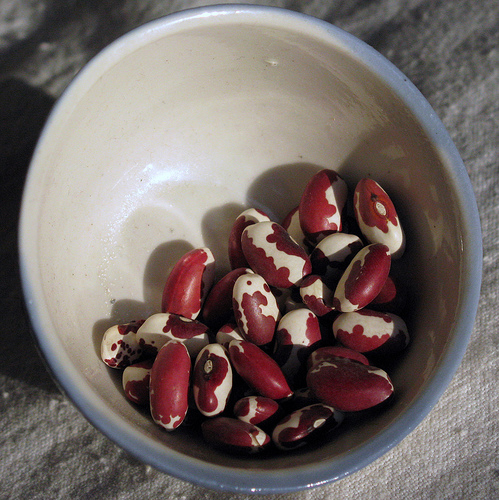Nice enough beans, 1 but is the story circulating about them really true?
The story of Anasazi beans varies, depending on who is telling it. In popular mythology, the beans were uncovered by an anthropologist, who discovered a 1,500 year old tightly sealed jar of the beans at a dig in New Mexico. Some of the beans germinated, and the new variety of bean entered cultivation again.
I tried to track the story down, and the closest I got to paydirt, I think, was a passage in Beans: A History by Ken Albala. But even that is pretty vague really. Archaeologists from UCLA somewhere in the midwest in the 1980s, or maybe 1950s, uncover a clay pot sealed with pine tar which they carbon date to 500 BCE. Some of the beans sprout and an intrepid businessman markets them. Yeah, right. To go back to the source of the previous quote:
Since most botanists agree that most beans are unable to germinate after approximately 50 years, it is more probable that the beans remained in constant cultivation in the Southwest, probably in Native American gardens, and that they were picked up by companies looking for new “boutique beans.”
There are plenty of companies marketing Anasazi beans now. But actually it is not impossible for legume seeds to keep their viability for more than 50 years — that’s what genebanks are for. And the dry, relatively cool conditions of an Arizona cave might just be good enough to ensure the survival of a few beans for centuries.
